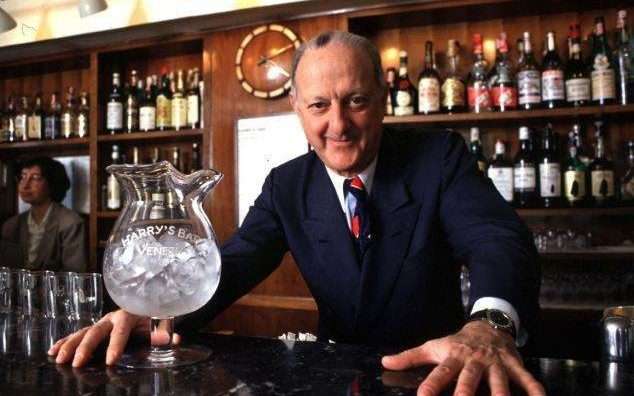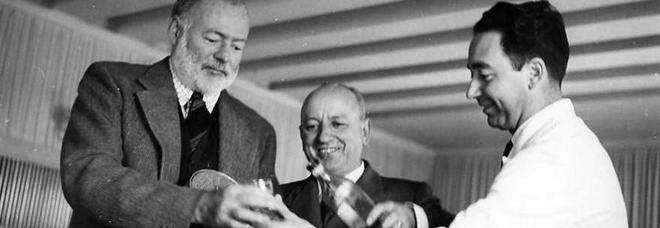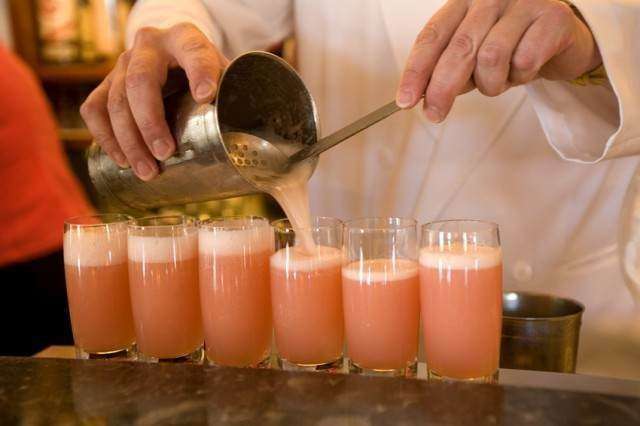Harry’s Bar is a historical public bar of Venice. It has been declared in 2001 national heritage by the Minister of Culture. It opened its doors in 1931 thanks to Giuseppe Cipriani and, as he told, the name recalls one young american student Harry Pickering who came to Venice with his aunt in the ’20 to treat his alcohol dependance. Harry was left by his aunt alone in Venice without money, after a fight. Giuseppe Cipriani, bartender at the Europa & Britannia hotel, where Harry was staying, gave 10.000 lire to this yopung man to help him to get back to the U.s. After two years, Harry came back to Venice, after he healed to his dependance, and gave to Cipriani the money he borrowed him plus 30.000 lire to open his own bar. Cipriani decided to entitle his place in “Harry’s Bar” as gesture of gratitude to Harry Pickering. The bar opened on May 13th 1931.
Arrigo Cipriani, son of Giuseppe, runs the bar since 1980.
The bar was open is a 45 mq2 place, situated near Saint Mark’s square, in Calle Vallaresso on the side of the Grand Canal, where it actually is. During that time, the bridge that today connects the street with Saint Mark’s square was not present so the bar was located in a dead end street. Cipriani thought that this thing was positive because the bar could have clients coming there only for the bar and not for fortuity.
The famous writer Ernest Hemingway, together with Giuseppe Cipriani, founder of the historical Harry’s Bar in Venice.
Cipriani’s place which was bar and restaurant, had an immediate success. It was attended the most by an intellectual and aristocratic clientele. The first (and last) guests’s book contains signatures of Rino Amato, Arturo Toscanini, Geroges Braque, Truman Capote, Charlie Chaplin, Peggy Guggenheim, Barbara Hutton, Somerset Maugham, Grégoire Hetzel, Barbara Carlotti, Mauro Gioia and Orson Wells. The bar had some issues with the fascists authorities of the time due to the clients who attended the place. The bar was seen as a meeting point of rich jews and homosexuals. With the racial laws of 1938, Cipriani was obliged to display in his bar the sign to ban the jews. He was able to fool that order, displaying that sign on the kitchen door and not on the bar door. During the 2nd world war, the bar became the canteen of sailors. After the war, it restarts its activity as usual. During the winter between 1949 and 1950, the american writer Ernest Hemingway, became a permanent client. He had his personal table and became friend of Cipriani. During that period, he was finishing to write his book “Across the river and into the trees” in which Harry’s Bar is often mentioned.
The Bellini cocktail, the speciality of Harry’s Bar.
The two most important creation, that you can taste at Harry’s are Bellini and carpaccio. You can’t miss them.
Ask at the reception to reserve your table at Harry’s!


